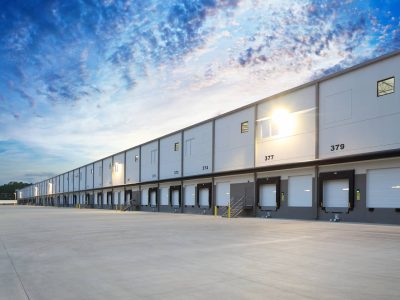Whether you primarily ship to or receive from a warehouse, you depend on the quality of its logistics to move your goods and keep them safe.
Technology has made warehouses safer, more efficient, and better able to track incoming and outgoing materials with the touch of a button. This is why it matters where you ship or store your products because the skilled use of warehouse logistics can vary significantly between locations.
What is Warehouse Logistics?
It is common to hear the words warehouse and logistics linked together as if they were the same process. In reality, they work together but are not the same thing.
The best way to answer this question is to begin by defining logistics. A basic definition of logistics is the process involved in the comprehensive planning, arrangement, oversight, and execution of multifaceted operations. Typically, a logistic warehouse involves the moving of physical products as well as information.
Warehouse logistics involves the physical movement of goods as they are received by the warehouse, stored, and shipped off the premises. In addition to managing physical assets, the data that arrives with the products also needs to be moved in an orderly fashion.
The information flow includes noting issues with the supply chain, analysing product demand, and determining how long it will take to fulfil a customer’s order. A modernised warehouse will have software designed to assist in managing the information flow.
Typically, this includes the integration of AI and machine learning. Using advanced technology helps solve problems and predict future issues. By building on information compiled in the past, AI can devise workarounds to keep everything running smoothly.
What is the Process Involved in Warehouse Logistics?
Warehouse Logistics is complex and multifaceted. There are several factors involved in the process of warehouse logistics. These include:
Warehouse Management
This process focuses on improving efficiency. The detailed task collects data by observing staff, tracking the inventory, and planning training operations. Additionally, members of a warehouse management team must build strong relationships with other business partners, for example, shipping companies.
The position also involves:
- Collecting shipping information
- Maintaining the proper certification and license for operations
- Ensuring safety protocol is followed
- Managing the use of warehouse space
- Planning and managing project labour for the future
Warehouse Operations
The process of warehouse operations focuses on moving products and tracking shipments. It keeps in mind the core principles of warehouse logistics. These are receiving shipments of products, separating and storing them, and then shipping them to the next destination when requested. When warehouse operations are running smoothly, the result is Optimised use of space, on-time deliveries, and excellent client relationships.
Warehouse Management Systems
The warehouse management system (WMS) is advanced software designed to assist in overseeing the logistics processes. The WMS works with the processes and gets real-time analytics. It is also tasked with implementing AI and other technologies. WMS also makes strategic designs and collects data regarding warehouse information based on business goals.
Benefits of Warehouse Logistics
Warehouse logistics offers businesses several benefits, including:
- Better Control of Inventory – This is critical for impactful management. Controlling supply and demand allows for optimum stock without unnecessary excess.
- Flexibility – When a warehouse is fine-tuned, there is room for flexibility. The ability to adjust to trends and customer needs improves the business at all levels.
- Reducing Costs – You can improve your bottom line by using warehouse logistics to ensure you hold the correct amount of stock at any given time. By avoiding over or under-stocking, your costs are reduced.
- Improved Productivity – When warehouse logistics management is employed correctly, workers can do their jobs faster and with fewer diversions because of missing products or significant time spent travelling throughout the warehouse.
Warehouse Logistics Best Practices
- Work with technology and automation – A vast number of Australian businesses have welcomed WMS and other automation programs with significant benefits.
- Make inventory optimisation a primary concern – This is crucial to minimise costs while meeting customer needs efficiently. Numerous Australian businesses operate on the just-in-time principle. JIT embraces the idea of ordering and delivering products as required.
- Prioritise communication and collaboration – Teams function best when everyone is on the same page. Ensure your employees are working together for the greater good.
- Be sure your company is Occupational Health and Safety compliant – While this is necessary for every business, warehouses have ample opportunity for accidents if the conditions are not compliant.
- Focus on eliminating waste and enhancing efficiency – Optimise how your employees perform their jobs by eliminating unnecessary movement and time-consuming actions.
Conclusion
The success of your business depends on smooth operations at every phase. You make your products to the best of your ability; do not let haphazard handling and poor logistics diminish your hard work. Work with an experienced team that is consistently at the top of the list for Perth’s most trusted logistics company, Bossna Logistics. We have built our business on efficiency, cost-effectiveness, and customer service. Contact us to learn more about how Bossna Logistics can help elevate your company.







